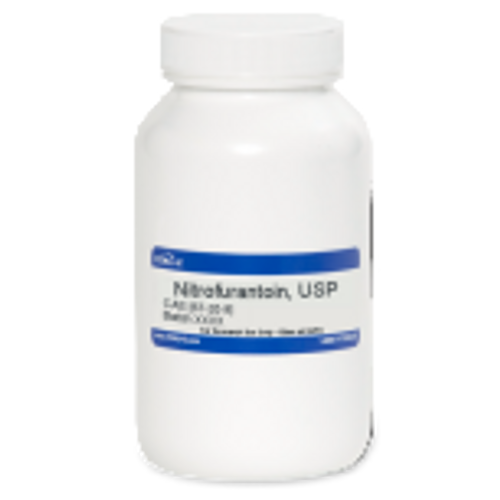Nitrofurantoin is broad-spectrum nitrofuran antibiotic that is used as a substrate for bacterial glycoprotein nitrofuran reductase. It is bacteriostatic against Gram-positive and Gram-negative bacteria. The compound has been found to have anti-cancer properties against bladder cancer cells grown in vitro. The product can be used to study antibiotic resistance.
Nitrofurantoin is soluble in DMF but practically insoluble in aqueous solution.
We also offer:
- Nitrofurantoin Sodium (N061)






